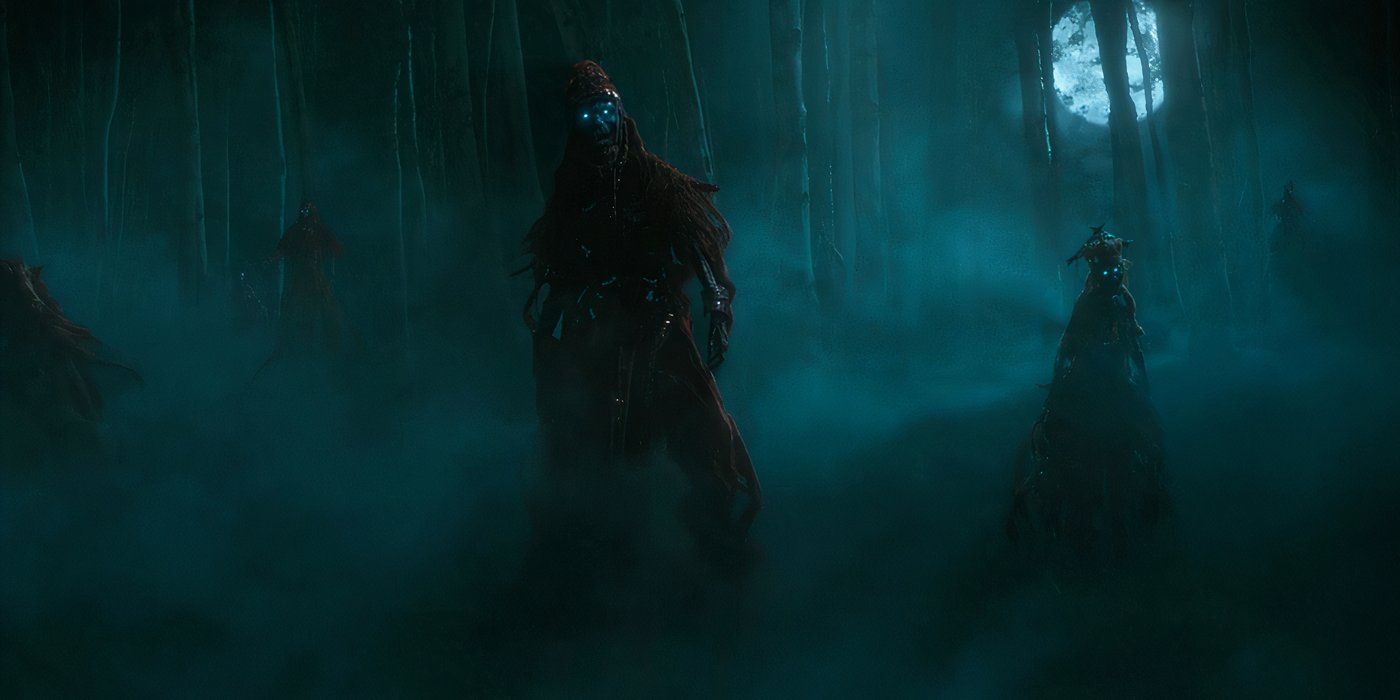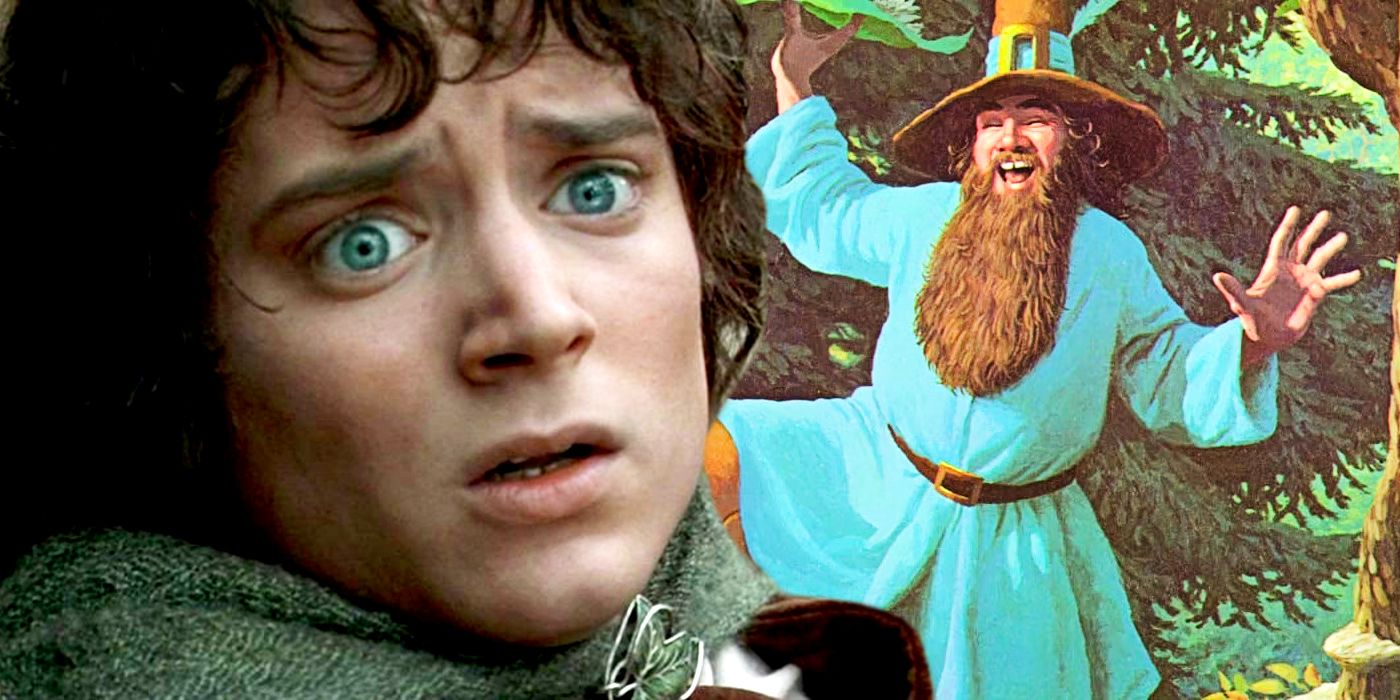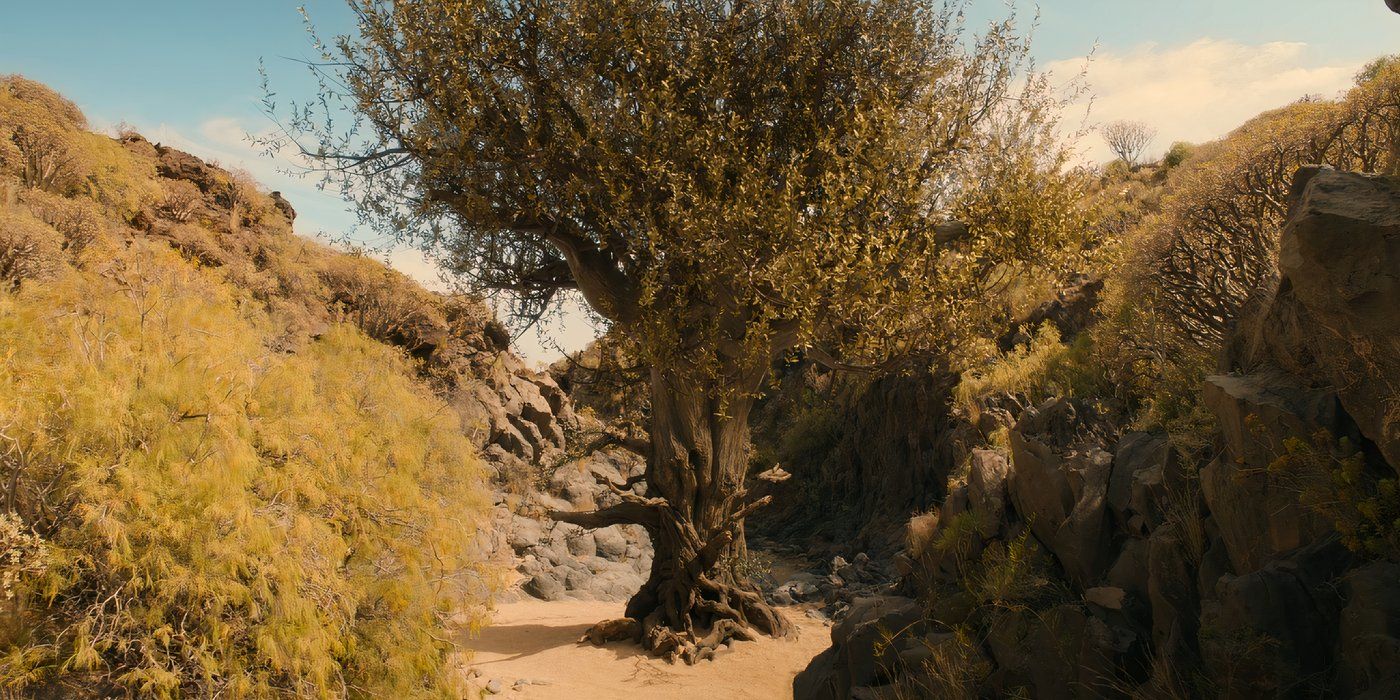
The Lord of the Rings: The Rings of Power season 2 has restored book elements that Peter Jackson cut from The Fellowship of the Ring. When watching the Lord of the Rings movies in chronological order, The Fellowship of the Rings naturally comes first. Millennia before this lies The Rings of Power, with the show detailing the wars, battles, politics, and ring-forging of The Lord of the Rings’ Second Age.
Given The Rings of Power‘s place on the Middle-earth timeline, the show’s connections to Peter Jackson’s trilogy stem from the more ancient aspects of Middle-earth. For example, many of The Rings of Power‘s cast members who play elven characters or long-lived men are earlier versions of those seen in Jackson’s movies, from Galadriel, Elrond, and Gil-galad to Isildur and Elendil. Interestingly, The Rings of Power season 2, episode 4 provides more connections to Jackson’s movies, though this time thanks to the former adapting scenes that the latter did not include from Tolkien’s works.
The Rings Of Power Season 2, Episode 4 Includes Both Barrow-Wights & Tom Bombadil
A Cut Fellowship Of The Ring Scene Makes Its Way Into The Second Age

Two of the elements that The Rings of Power season 2 includes that Jackson omitted from The Fellowship of the Ring are Tom Bombadil and Barrow-wights. Beginning with the former, Tom Bombadil is introduced as an ally of The Stranger in The Rings of Power. The Stranger realizes that it was Tom he was destined to find beneath the star constellation he has been following due to the latter’s incredible magical power. Although Bombadil retains his somewhat neutral nature from Tolkien’s books, and the mystery of what he is remains unanswered, he tells The Stranger about Sauron’s allies in Rhûn.
Tom Bombadil is one of the more notable omissions from Jackson’s film trilogy. The reason Jackson and his team chose to leave Bombadil out of the story was the overall lack of impact he had on the journey of Frodo and Lord of the Rings’ One Ring. Despite interesting questions being raised about Bombadil’s nature and why the Ring does not affect him, the character is not seen again throughout the entirety of Tolkien’s The Lord of the Rings novels, with Jackson choosing to leave him absent from The Fellowship of the Ring to keep the story tight and focused.
Concerning the Barrow-wights, they serve as the antagonistic force of one of The Rings of Power season 2, episode 4’s action sequences. The Barrow-wights attack Galadriel, Elrond, and their party as they journey to Eregion, forcing the elves to fight against the evil spirits of unknown origin. In Tolkien’s Fellowship of the Ring, Barrow-wights appear as an early threat to Frodo, Sam, Merry, and Pippin, yet Jackson opted against including the scene in his movie for similar reasons as removing Bombadil from the story.
The Fellowship Of The Ring’s Barrow-Wights & Tom Bombadil Scenes Originally Happened Together
The Two Missing Elements From Jackson’s Movie Would Have Made Up One Scene

Had Jackson included both the Barrow-wights and Tom Bombadil in his adaptation of The Fellowship of the Ring , the two would be found together…
As such, had Jackson included both the Barrow-wights and Tom Bombadil in his adaptation of The Fellowship of the Ring, the two would be found together. However, in The Rings of Power season 2, episode 4, this is not the case. Both elements being included in the same episode was likely a calculated decision on the part of the creators of The Rings of Power, but Tom Bombadil is found in the far eastern Middle-earth land of Rhûn, while the Barrow-wights are in Eriador as they are in Fellowship.
The Rings Of Power’s Tree Scene Adapts Fellowship Of The Ring’s Old Man Willow
Another Cut Scene From Jackson’s Fellowship Of The Ring Involves Bombadil Too

The second scene that was removed from Jackson’s iteration of The Fellowship of the Ring also involved Tom Bombadil and was paid homage to in The Rings of Power season 2, episode 4. The scene in question comes early in Tolkien’s original book and introduces Tom Bombadil shortly before he saves the Hobbits from the Barrow-wights. As they are traveling through the Old Forest, Merry and Pippin get trapped beneath the roots of a great tree named Old Man Willow, a malevolent force who hates trespassers. Bombadil arrives and sings the tree to sleep, freeing Merry and Pippin.
Tom Bombadil’s singing is depicted in The Rings of Power, with the character often heard singing songs included in Tolkien’s books.
In The Rings of Power season 2, episode 4, The Stranger encounters a similar great tree in Rhûn. As he tries to break off one of its branches to serve as a staff, the tree envelops him with its roots before Bombadil arrives. Bombadil speaks the words that he does to Old Man Willow from Fellowship, resulting in the tree freeing The Stranger from its wooden tomb.
This tree is named Old Man Ironwood, a tribute to the cut Old Man Willow scene. Through Ironwood’s inclusion, Bombadil’s character arc, and the attack of the Barrow-wights, The Rings of Power pays tribute to both Tolkien’s writing and the elements missing from Jackson’s Lord of the Rings trilogy. With the Prime Video show linking more closely to the former in season 2 than it did in season 1, it will be a joy to see what other elements from Middle-earth will be highlighted in future episodes, and which of those were absent from prior iterations of the magical world.





